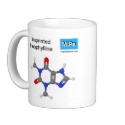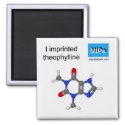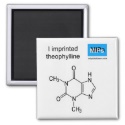|
|
Reference type: Journal
Authors: Chen YC, Wang ZM, Yan MD, Prahl SA
Article Title: Fluorescence anisotropy studies of molecularly imprinted polymers.
Publication date: 2006
Journal: Luminescence
Volume: 21
Issue: (1)
Page numbers: 7-14.
DOI: 10.1002/bio.874
Alternative URL: http://www.bme.ogi.edu/~prahl/pubs/pdfx/chen06a.pdf
Abstract: A molecularly imprinted polymer (MIP) is a biomimetic material that can be used as a biochemical sensing element. We studied the steady-state and time-resolved fluorescence and fluorescence anisotropy of anthracene-imprinted polyurethane. We compared MIPs with imprinted analytes present, MIPs with the imprinted analytes extracted, MIPs with rebound analytes, non-imprinted control polymers (non-MIPs) and non-MIPs bound with analytes to understand MIP's binding behaviour. MIPs and non-MIPs had similar steady-state fluorescence anisotropy in the range 0.11-0.24. Anthracene rebound in MIPs and non-MIPs had a fluorescence lifetime of [tau] = 0.64 ns and a rotational correlation time of [phi]F = 1.2 - 1.5 ns, both of which were shorter than that of MIPs with imprinted analytes present ([tau] = 2.03 ns and [phi]F = 2.7 ns). The steady-state anisotropy of polymer solutions increased exponentially with polymerization time and might be used to characterize the polymerization extent in situ. Copyright © 2005 John Wiley & Sons, Ltd
Template and target information: anthracene
Author keywords: steady-state anisotropy, time-resolved anisotropy, time-resolved fluorescence, polymerization kinetics, anthracene sensing
|


 theophylline template mug ball and stick
theophylline template mug ball and stick







 I imprinted theophylline magnet ball and stick
I imprinted theophylline magnet ball and stick







 I imprinted theophylline magnet
I imprinted theophylline magnet






